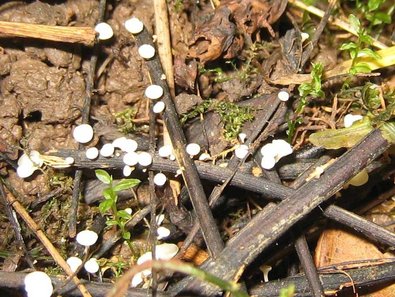
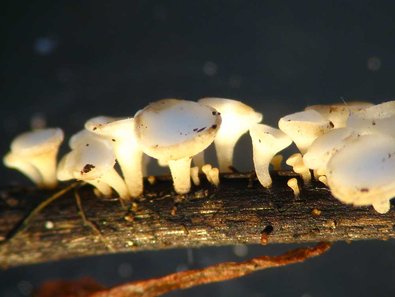
Fig. 1: Apothecia of the causal agent Hymenoscyphus fraxineus on an ash petiole of the previous year.
Ash dieback first occurred in Europe in 1992 in north-eastern Poland. Now this serious tree disease affects European ash (Fraxinus excelsior) throughout most of its natural range in Europe. In Baden-Wuerttemberg, the symptoms were first detected in plantations and natural regeneration in the spring of 2009. This disease affects ash trees of all ages and site conditions. The FVA is studying ash dieback intensively.
The causative agent of ash dieback, the ascomycete Hymenoscyphus fraxineus, (syn. H. pseudoalbidus), is suspected to have been unintentionally imported from eastern Asia. There, the fungus lives inconspicuously and harmlessly in the leaves of the native ash, Fraxinus mandshurica. However, in European ash the fungus penetrates through the petioles and then into the shoots and kills them. Furthermore, we recently observed that the same fungus can also cause collar rots. Subsequently, underlying segments of sapwood die, which causes an increased risk of tree hazards because of the action of opportunistic wood decay fungi.
At the FVA we focus on estimating resistance potential that exists in our ash populations. In this regard we cooperate with the Institute for Forest Ecology and Forestry Rhineland-Palatinate, and with the Bavarian Office for Forestry Seeds and Plant Breeding. We also maintain a scientific exchange with the European COST Action "FRAXBACK" (FP1103).
The continuous deterioration in the health of pole-sized ash in a provenance trial has been monitored annually since 2009. Twenty percent of the trees have died. Another 20 percent of the ash trees have already lost more than half of their crown to the disease, so they are also expected to die within a few years. In contrast, only one percent of the trees is completely devoid of disease symptoms. Grafts were taken from these healthy trees to investigate the stability of clones to resist the disease.
We also studied the extent of resistance in 250 clones within seed orchards near Emmendingen, Schorndorf, Kusel and Landstuhl, which included more than 1700 grafts. The differences in susceptibility within the clones and between the clones showed that about half of the observed variance was genetically determined. This means that the inheritance of susceptibility is similar to that demonstrated for Scandinavian populations. A small percentage of the southwestern German ash trees is fairly resistant. These trees may be a source for both natural regeneration and planting stock for a healthier ash generation in the future.
Currently, disease progression and mortality in pole as well as in timber sized trees is driven by the sharply increasing number of collar rots. In particular, ashes in moist or water logged sites are seriously affected. These are prone to butt rot fungi, primarily Armillaria species. The increasing risk of tree hazards is of great importance to foresters dealing with work and traffic safety. In this regard, the FVA Department of Forest Health advises forest authorities, issues numerous publications, and contributes to press reports, and radio and television programs.
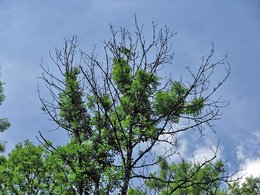
Fig. 2: Crown dieback of an affected ash with some replacement shoots.
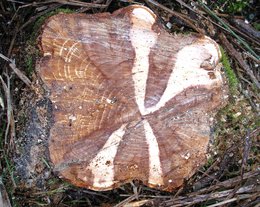
Fig. 3: Discoloration and wood decay after infection of the root collar.
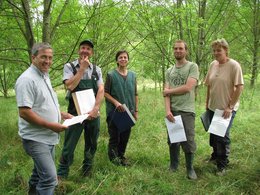
Fig. 4: The joint research team of Rhine-Palatinate and Baden-Württemberg.
